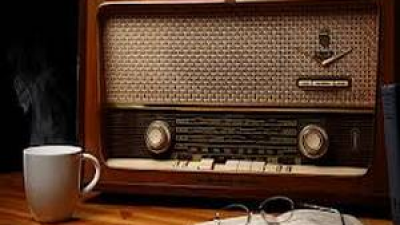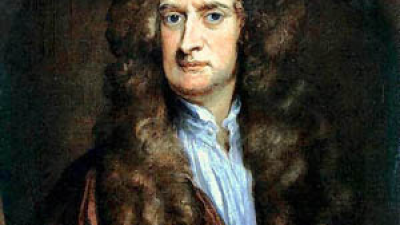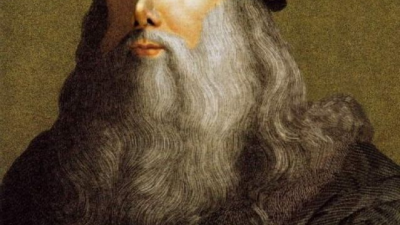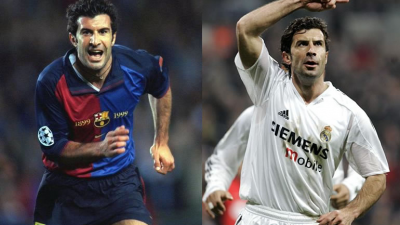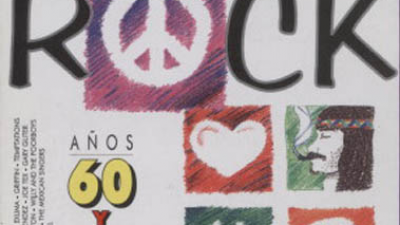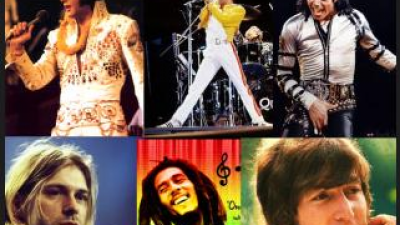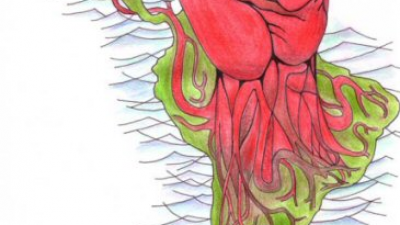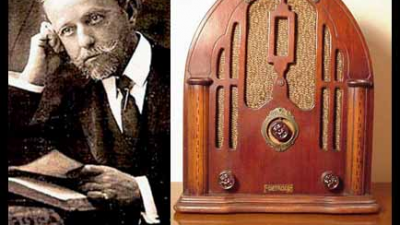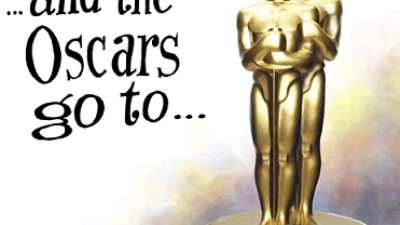Great inventions of the 19th century
|
OTHERS
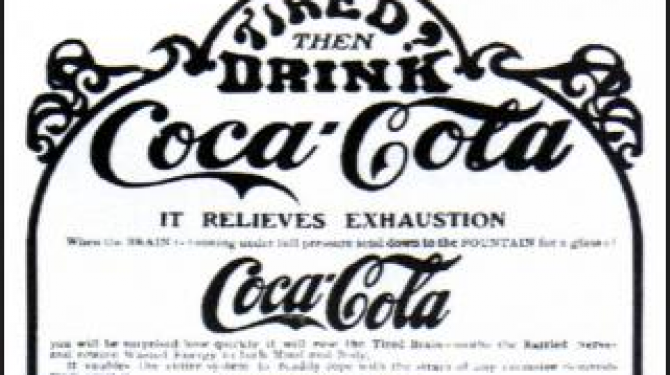
Source: listas.20minutos.es
Many of them are part of our day to day. Which one do you prefer?
TOP 19:
Phonograph-Thomas Alva Edison (1878)
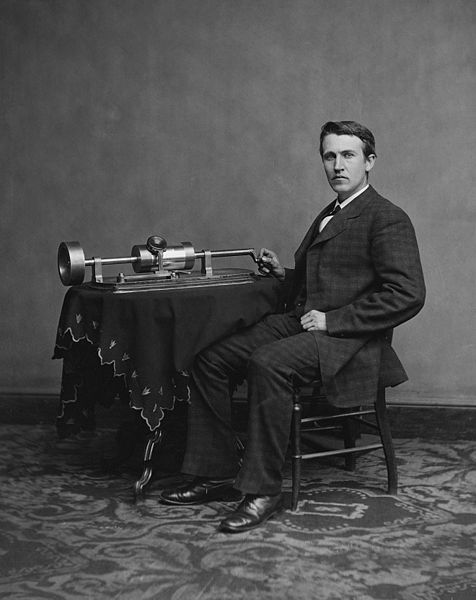
When Thomas Alva Edison announced the invention of his first phonograph, the first piece performed was "Mary had a little lamb" on November 21, 1877, he showed the device for the first time on November 29, that same year and he patented it on February 19, 1878.4 The phonograph uses an analog mechanical recording system in which sound waves are transformed into mechanical vibrations by means of an acoustic-mechanical transducer. These vibrations move a stylet that carves a helical groove on a phonograph cylinder. To play the sound, the process is reversed. At first, tin-coated cardboard cylinders were used, later paraffin cardboard and, finally, solid wax. The wax cylinder, of greater quality and durability, was marketed since 1889, a year after the gramophone appeared. On December 2, 1889, a representative of the Edison house, Theo Wangeman, recorded an interpretation of the famous composer Johannes Brahms. It was a fragment of the Hungarian Dances in a solo piano version. This recording is still preserved, but its quality is very bad.
TOP 18:
Vitascopio-Thomas Alva Edison (1896)
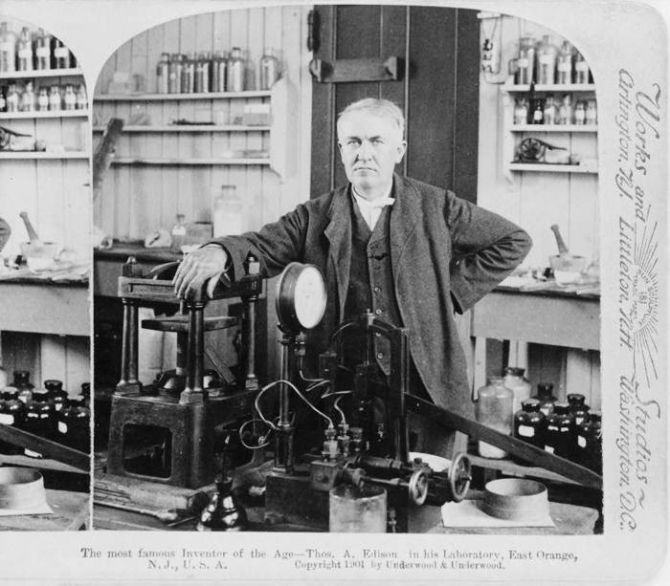
Edison did not commercially develop the Vitascope until after a few years, because his kinetoscope was still profitable. However, movie screenings could generate greater benefits, since unlike the kinetospio (which offered an individual viewing) it could reach large audiences. At the same time, there were other attempts to develop new reproduction systems. The eidoloscope, created by Woodville Latham, was presented publicly in April 1895. Dickson apparently collaborated with Lathams on the design of the machine, offering technical expertise. For this reason on April 2, 1895, Dickson quit working for Edison. Dickson formed the American Mutoscope Company in December 1895. His partners were Herman Casler, Enrique Norton Marvin and Koopman Elías. The company, which became known as the American Mutoscope and Biograph Company, soon became an important competitor for Edison's company. During the same period, C. Francis Jenkins and Thomas Armat developed a film projection device which they called phantoscipio. It was shown publicly in September 1895 at the Exhibition of Cotton States. Soon after, the creators separated, each claiming credit for the invention. Armat showed the phantoscope to Raff and Gammon, the owners of the Kinetoscope Company, who realized their potential to secure profits as revenues from the kinetoscope decreased. They negotiated with Armat to buy the exploitation rights of the phantoscope, with the prior approval of Edison. The Edison Manufacturing Company agreed to manufacture the machine and produce films for it, but on condition that it be announced as a new invention of Edison and rename the phantoscope to a vitascope. The first exhibition in theaters was on April 23, 1896, at the Koster and Bial's Music Hall in New York. Other competitors soon showed their own projection systems in American cinemas, including the eidoloscope, a copy of the Vitascope, the Lumière Cinematograph, which had already debuted in Europe in 1895; Birt Acres Kineopticon, and even the American Mutoscope & Biograph Company produced its own project. The vitascopio, along with many of the projectors of the competition, became a popular attraction at fairs and vaudeville theaters in the main cities of the United States. The exhibitors could choose the films they wanted from the Edison catalog, and even in what order or sequence to arrange them. The Edison Company began the development of its own projector in November 1896, abandoned the commercialization of the vitascopes.
TOP 17:
Photophone-Alexander Graham Bell (1880)
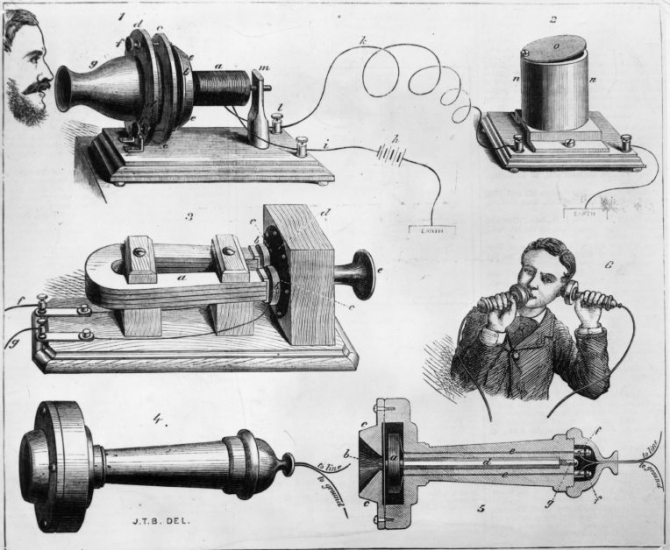
The Photophone was a device that allowed the transmission of sound through a light emission, invented by Alexander Graham Bell in collaboration with Charles Sumner Tainter. The device used light sensitive cells made with selenium crystal, one of its properties is that the electrical resistance varies inversely with the lighting. The basic principle of the photophone was to modulate a light emission directly to the receiver, manufactured in Selenium, which was where a telephone was connected. Modulation was done by a vibrating mirror or a rotating disk that periodically obscured the beam of light. The idea was not new, the Selenium had been discovered by Jöns Jakob Berzelius in 1817, and its peculiar properties in the form of crystals or granules were specified by Willoughby Smith in 1873. In 1878, a writer with the initials JFW published on June 13 a column in Nature, asking if any experiment in this regard had been performed. This article is attributed to Bell. In his role in the photophone, Bell credited AC Browne of London with the independent discovery in 1878. But Bell and Tainter were the first to develop a successful procedure, which was not considered an easy task because the cells were required to be manufactured. of selenium with the characteristics required in resistance. In an experiment in Washington DC, the sender and receiver were located in different buildings about 700 feet apart. The emitter consisted of a mirror that directed sunlight to be modulated by a vibrating mirror and focused by a lens that directed it at the receiver. The receiver consisted of a parabolic reflector with selenium cells in the focus and a built-in telephone. With this arrangement Bell and Tainter succeeded in communicating clearly. The photophone was patented on December 18, 1880, but the communication quality remained poor and the investigation was not continued by Bell. Subsequently, this invention served as the basis for the development of communications using optical fiber and laser.
TOP 16:
Gramophone-Emile Berliner (1888)
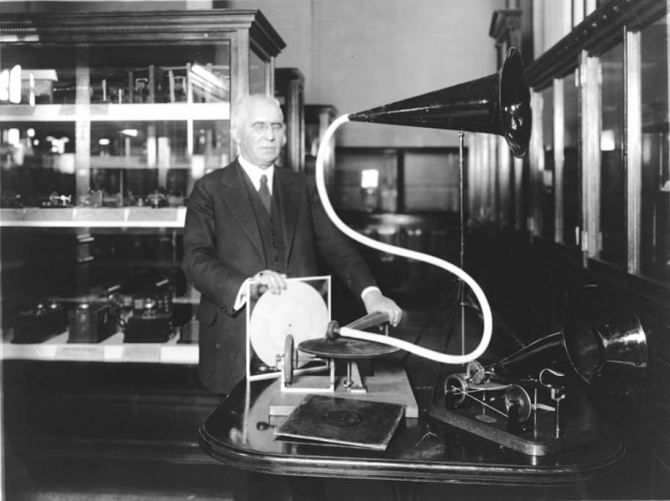
Both use mechanical recording (one of three analog recording systems), but it is the only thing they have in common. The phonograph used cylinders, like music boxes. The gramophone used discs, although they were not made of vinyl acetate. Thomas Edison patented the phonograph in 1877, Berliner the Gramophone almost a decade later. The gramophone began to be commercialized in 1893 by the company "The United States Gramophone Company" that Berliner founded. By 1899, the invention of Emile Berliner was in the hands of three companies: "The Berliner Gramophone Company" (Philadelphia) that manufactured gramophones and records, "The Seaman National Gramophone" (New York) that carried out the marketing and "United States Gramophone Company" (Washington) I had. On January 2, 1900, Berliner began manufacturing single-sided or single-sided seven-inch discs in Montreal. At the beginning of the same year, the second of the aforementioned companies negotiated an agreement with the "American Gramophone and Columbia Phonograph" to manufacture the Zonophone, a similar device. Berliner considered it a betrayal of the exclusivity agreement that he had, which was aggravated when the Seaman National Gramophone was banned by a commercial trial that allowed the Berliner company to sell its invention in the United States. For this reason, Berliner moved his company to Montreal (Canada), which was renamed "Berliner Gram-O-phone Company". On July 16, 1900, Berliner registered his company's logo: a dog listening to a gramophone. In 1924, the company was bought by "Victor Talking Machine Company", which in 1929 was renamed RCA Victor, after being acquired by Radio Corporation of America (RCA). Emile Berliner died on August 3, 1929, as a result of heart attack.
TOP 15:
Fresnel-Augustin Fresnel Lens (1819)
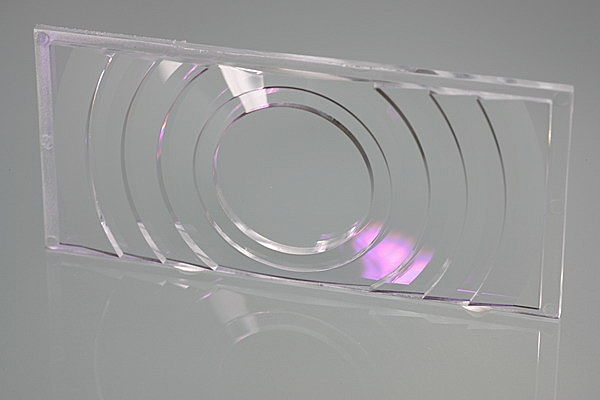
The Fresnel Lens, named after its inventor Augustin Fresnel, is a lens design that allows the construction of large aperture lenses and a short focal length without the weight and volume of material that you should use in a conventional design lens. When the lenses are large, their thickness can become excessive, making the lens very heavy and expensive. Instead, the radii of curvature of the lenses can be maintained by separating them into circular rings. The thickness of the lens in each ring is different, eliminating the enormous thickness that the lens would have of being its continuous surfaces, while the surface has a stepped appearance. They are used in flat magnifying glasses with credit card format, headlight headlights, car headlights, direction indicators, etc.
TOP 14:
Clinical Thermometer-Thomas Clifford Allbutt (1866)
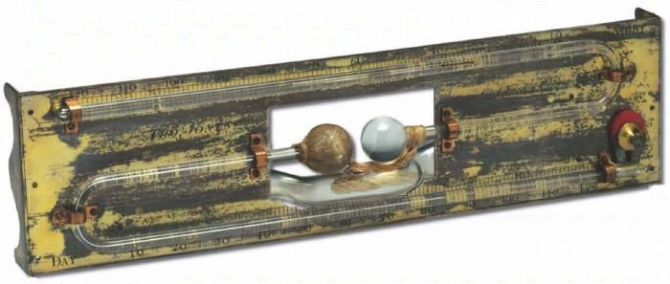
Sir Thomas Clifford Allbutt (July 20, 1836 in Dewsbury, Yorkshire - February 22, 1925, in Cambridge, Cambridgeshire) was a British physician inventor of the clinical thermometer. Before this invention, patients had to keep a thermometer in their hands for about an hour for an acceptable measurement of their fever. Thomas Clifford Allbutt was an aboriginal of Dewsbury, Yorkshire, son of Rev. Thomas Allbutt, vicar of Dewsbury, and Mary Anne Wooler (1801-1843). He was educated at St Peter's School, York and Caius College, Cambridge, where he earned his BA in 1859, with a First Class degree in natural history in 1860.
TOP 13:
Pasteurization Method-Louis Pasteur (1864)
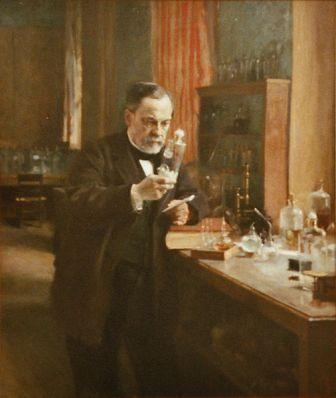
Some of his contemporaries, including the eminent German chemist Justus von Liebig, insisted that fermentation was a chemical process and did not require the intervention of any organism. With the help of a microscope, Pasteur discovered that, in reality, two organisms - two varieties of yeasts - were the key to the process. One produced alcohol and the other, lactic acid, which made wine sour. He used a new method to eliminate microorganisms that can degrade wine, beer or milk, after enclosing the liquid in well sealed vats and raising its temperature to 44 degrees Celsius for a short time. Despite the industry's initial rejection of the idea of heating wine, a controlled experiment with lots of heated and unheated wine demonstrated the effectiveness of the procedure. The "pasteurization" was born, the process that currently guarantees the safety of numerous food products in the world.
TOP 12:
Soap bar-William Hesketh Lever (1884)
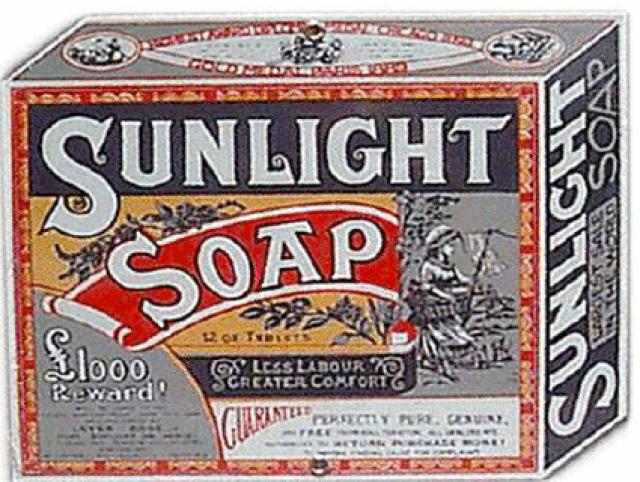
TOP 11:
Airship-Solomon Andrews (1863)
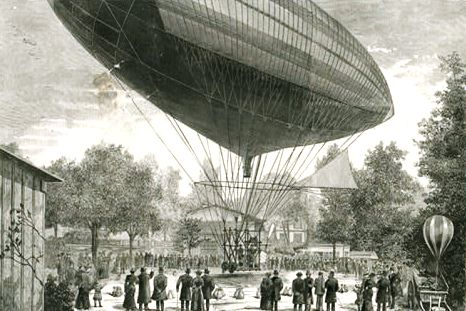
Solomon Andrews (1806-1872) was an American doctor and inventor who built the first airship. The difference between the specific weight of the balloon and the surrounding atmosphere led him to create a system of inclined planes that allowed the device to govern, without the need for an engine. His first creation, called "Aereon" flew over Perh Amboy, New Jersey on June 1, 1863. It was a 24 m long cigar-shaped balloon to which he added rudder and gondola. In the following summer Andrews wrote to Abraham Lincoln offering him the "Aereon" for the American civil war. After several discussions, it was agreed to conduct a demonstration in early 1864 at the Smithsonian Institute. About a year later he was informed about the little interest of the government in his invention, and by then the war was almost over. Andrews later organized the Aerial Navigation Company in order to build airships for commercial use, and establish a regular line between New York and Philadelphia. The "Aereon 2", equipped with a spherical balloon, flew over New York City on May 25, 1865. The second trip, made on June 5 of the same year, reached Oyster Bay on Long Island. At this point, the postwar economic collapse and the consequent bankruptcy destroyed the company, which never worked again.
TOP 10:
Photography-Nicéphore Niepce (1816)
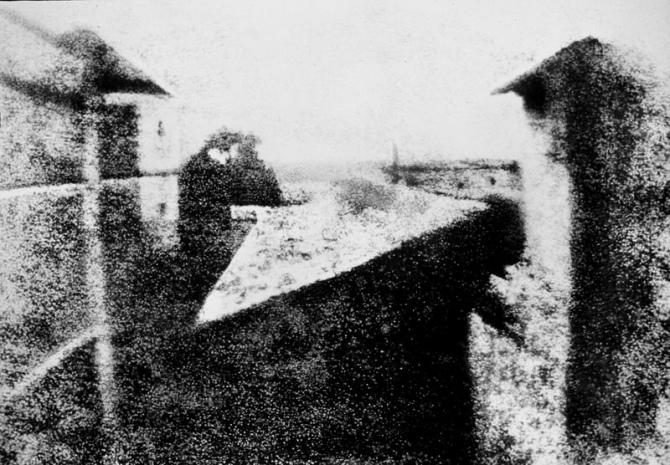
Niépce was interested in lithography, and began his experiences with the optical reproduction of images by making copies of works of art, using the drawings made in lithographic stone by his son. His first experiments, in 1813, used resinous gums exposed directly to sunlight. His first success in obtaining light-sensitive medium came with the use of asphalt dissolved in oil. When his son enlisted in the army in 1814, he had the idea of using a dark chamber along with light-sensitive silver salts to try to get still images. He began using the stone as a support to fix the images, although he quickly gave up on the great problems that it entailed. He then continued with the paper, then with the glass and, finally, with various metals such as tin, copper and pewter. He obtained the first photographic images of history in 1816, although none of them has been preserved. They were paper and negative photographs, but like many other inventors of that time, he was not interested in obtaining positives, so he abandoned this line of research. A couple of years later, already in 1818, he obtained images directly in positive, thus sacrificing the possibilities of reproduction of the images, since they were the only images obtained. The procedure used was called heliography, distinguishing between heliogravines - reproductions of existing engravings - and points of view - images captured directly from the natural by the camera. Viewpoint from the Gras window, dated 1826, is the first known photograph and is currently preserved at the University of Texas. However, the semiologist Roland Barthes, in his work "The Lucid Chamber" (Paidós, Barcelona, 1989), collects a later image that the author accompanies with a caption, "The first photograph". This is the work The table set, a blurry snapshot of a table ready to be used in a meal, dated by the author in 1822, which is preserved in the Nicéphore Niepce Museum. The previous photo, taken about ten years after I got the first images, collects a view of a street fixed on a metal plate. He needed 8 hours of exposure time of the plate to the light. To take this picture, he used a pebble plate covered with Judea bitumen, exposing the plate to light, leaving the image invisible; the parts of the varnish affected by the light became insoluble. After exposure, the plate was bathed in a solvent of lavender essential oil and white petroleum oil, the varnish parts not affected by light disintegrating. It was washed with water being able to appreciate the image composed by the layer of bitumen for the clearings and the shadows by the surface of the silver plate. Although Niépce lived and worked in Burgundy, at a time of his research he requires a new lens and asks a relative who was traveling to Paris to get it from the Chevalier brothers' optics, also giving him some photographic evidence of his experiments. The Chevalliers knew Daguerre and told him about Niépce and his heliographs. From that moment, Daguerre tries various ways of associating with Niépce, until in 1829 he manages to sign a constitution contract of a company, on December 14, 1829, through which Niépce reveals his advances, for the development and commercialization of the invention Because of a stroke suffered in his study of Saint Loup de Varennes (Burgundy), he died on July 5, 1833, at the age of sixty-eight, being buried in the village cemetery. Niépce's participation in the invention of photography, which became public in 1839 with the sole prominence of Daguerre, was the result of the initial disinterest of his son Isidore Niépce, who inherited and negotiated with Daguerre the benefits of that contract (which he sold the invented the French State), but did not claim recognition of his father's participation. However, in 1841, he published the work entitled "History of the discovery of the invention called daguerreotype" in which his role in the history of the invention of photography was clarified, before the maneuvers made by Daguerre to hide his works.
TOP 9:
Anesthesia-William Morton (1846)
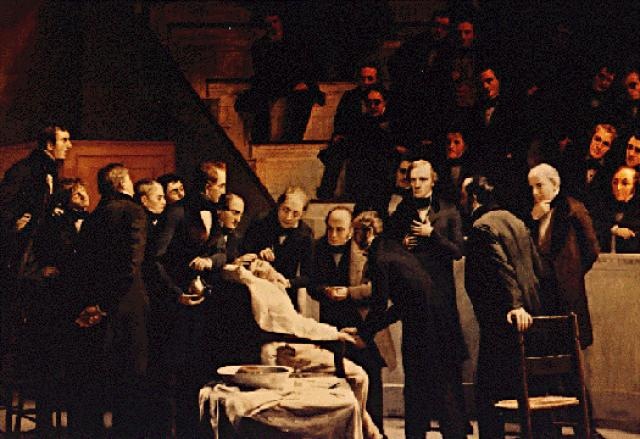
In 1275, the Spanish doctor Ramon Llull obtained a volatile and flammable liquid while experimenting with certain chemicals, and called it sweet vitriol. In the 16th century, a doctor of Swiss origin commonly known as Paracelsus caused some chickens to inhale sweet vitriol, and observed that they not only fell asleep, but also lost all sensitivity to pain. Neither he nor Llull, his predecessor, experimented with human beings. In 1730, the German chemist of German origin August Sigmund Frobenius gave this liquid its current name of ether, which in Greek means "heaven." However, an additional twelve years would have elapsed before the anesthetic powers of the ether were fully appreciated. Meanwhile, the English scientist Joseph Priestley discovered in 1772 nitrous oxide, a gas that was initially thought lethal, even in small doses. But in 1799 the British chemist and inventor Humphry Davy decided to solve the mystery by trying it on himself. He discovered with amazement that it made him laugh, so he called it "hilarious gas." Davy wrote about the possible anesthetic properties of the gaseous compound, but nobody in those days continued with the investigations. A young American doctor named Crawford Williamson Long realized that his friends were insensitive to pain even though they had been hurt by staggering from side to side under the effects of the ether. He immediately thought about its potential application to surgery. As it happened, James Venable, a student who participated in an ether party, had two small tumors that he wanted to be removed, but he always postponed the operation for fear of pain. When Long proposed to practice it under the effects of the ether, Venable agreed, and on March 30, 1842 the intervention was performed without pain. However, Long did not make his discovery public until 1849. It was the dental doctor Horace Wells who began using nitrous oxide as an anesthesia, after having seen him use the self-titled professor and chemist Gardner Q. Colton in his shows, which consisted of in administering this gas to public volunteers. This put them in a state of euphoria and excitement (sometimes violent), and they lost their inhibitions, which delighted the public. On one occasion, one of the volunteers under the effect of the gas was injured and Dr. Wells noted that he felt no pain. Based on this, he decided to check on himself if nitrous oxide eliminated pain and on December 11, 1844, after sucking the gas, his assistant John Riggs performed a dental extraction of a molar, without Wells complaining. Upon awakening, Wells exclaimed: "A new era for the extraction of dental organs." Later, on October 16, 1846, in Boston, it was William Morton, Wells's assistant, who gave a successful demonstration of the use of anesthesia when applied to a patient of Dr. John Collins Warren. Dr. Warren was able to remove a tumor from his patient's neck without him feeling any pain. Since then, Morton devoted himself to administering anesthesia, hiding the type of gas he used (which he called "letheon") to use exclusively, but he was forced to reveal that it was ether. From that moment, the use of ether spread rapidly. In mid-December 1847, in an Edinburgh hospital, the tocologist James Simpson and his partner Dunkan practiced the first delivery without pain using chloroform, since the ether had already been tested in January of that same year, verifying that despite remaining Asleep the patient contractions of labor continued normally. The ether caused side effects that prompted Simpson to look for another gas with similar effects but without the coughing that arose after inhaling large amounts of ether. The mother was so grateful that she called her daughter "Anesthesia." In 1848 Dr. Jonh Snow perfected the technique of application of chloroform when administered in small doses during delivery. This fact was not popularized until 1853, when Snow applied chloroform to Queen Victoria in the birth of Prince Leopold of Saxony-Coburg-Gotha. After delivery, he appointed Dr. Sir. Despite the introduction of other inhalational anesthetics (ethene, trichloroethene, cyclopropane), the ether continued to be the standard general anesthetic until the early 1960s, to then be replaced by potent and non-flammable inhalation agents, such as halothane, then followed by enfluorano, and later by the isofluorano until arriving, in the decade of 1990, to the sevofluorano and to the most recent defluorano. To achieve its goal of suppressing pain, anesthesiology must have experienced different ways of taking the individual to a reversible pharmacological coma, that is, canceling cortical activity through substances that cause membrane stabilization.
TOP 8:
Cinematograph-Brothers Lumière (1894)
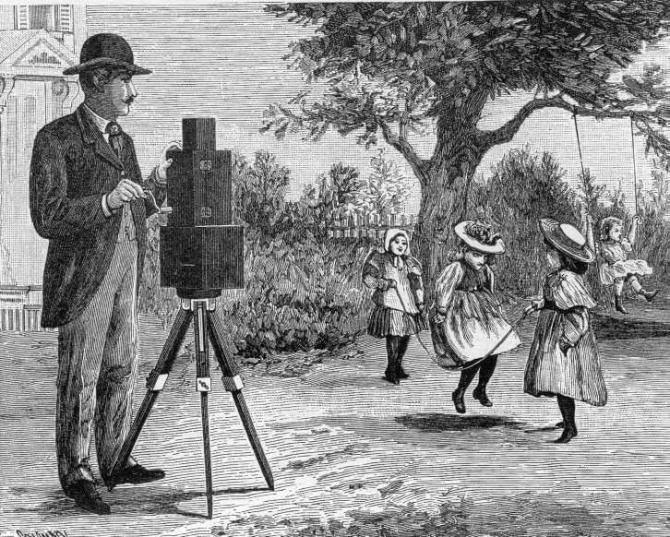
The invention of the cinematographer was the work of the Lumière brothers at the end of the 19th century. On December 28, 1895, the first exhibition with public of the cinematographer Lumière took place in the Indian Salon of the Grand Café, at number 14 of the Boulevard of the Capuchins of Paris. The program consisted of ten films of 15 to 20 meters each with a total duration of 20 minutes. These films were made by Louis Lumière and interpreted by his family and friends. The Departure of the Lumière Factory Workers (Sortie des Usines Lumière à Lyon) Children's Fight (Querelle de Bébés) The Fountain of the Tuileries (Le Bassin des Tuileries) The Arrival of a Train (L'arrivée d'Un Train) The Regiment (Le Régiment) The Blacksmith (Le Maréchal-Ferrant) The Card Game (La Partie d'Ecarté) Destruction of the Weeds (Mauvaises Herbes) Demolition of a Wall (Le Mur) The Sea (La Mer) The price of the locations was a franc. The collection that day was 35 francs. 35 spectators spread the news of the kind of miracle they had witnessed throughout the city. This publicity effectively replaced the lack of press and soon crowds gathered to access the projections. To renew the programs, which in the early days of January 1896 had incorporated El Regador Regado (L'Arroseur Arrosé), the first narrative and comic film in the history of cinema, the Lumière brothers had to recruit operators entrusted to them realization and screening of films. The cinematographer took a step to be able to screen the cinema, as time went by they were getting more advanced of these and improving the quality of the projected films.
TOP 7:
Vaccine-Edward Jenner
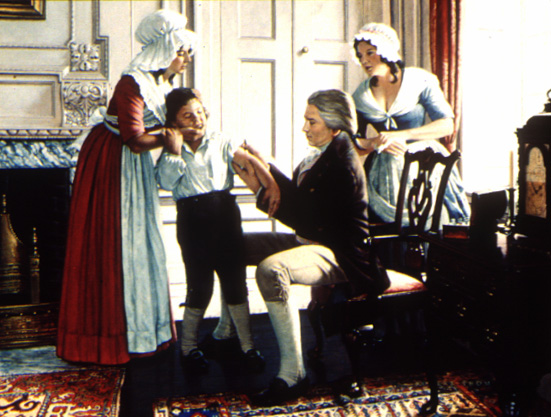
Smallpox was the first disease that the human being tried to prevent by inoculating himself with another type of disease.2 It is believed that inoculation was born in India or in China around 200 BC. C. In China, patients suffering from mild types of smallpox were collected fragments of dried pustules to grind them to a powder-like mixture that was then introduced through the nose, hoping that this would immunize them. In 1718, Lady Mary Wortley Montague reported that the Turks had a habit of inoculating with pus taken from smallpox vaccine. Lady Montague inoculated her own children in this way. In 1796, during the period of greatest spread of smallpox virus in Europe, a rural doctor from England, Edward Jenner, observed that milk collectors occasionally acquired a kind of "cowpox" or "cowpox" (cowpox) by continued contact with these animals, and then they were safe from getting sick of common smallpox. Indeed it has been proven that this smallpox vaccine is a mild variant of the deadly "human" smallpox. Working on this case of inoculation, Jenner took smallpox from the farmer Sarah Nelmes. He inserted this fluid through injection into the arm of an eight-year-old boy, James Phipps. The little one showed symptoms of smallpox vaccine infection. Forty-eight days later, after Phipps had fully recovered from such a disease, Dr. Jenner injected the boy with smallpox infection, but this time he showed no symptoms or signs of illness.
TOP 6:
Airplane-Clément Ader (1890)
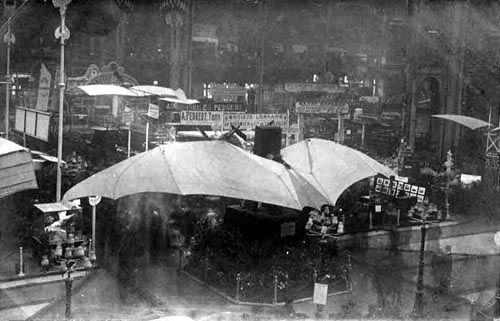
Clément Ader (Muret (France), April 2, 1841 - Toulouse (France), March 5, 1925) was a French engineer who owes, among other inventions, a microphone and the first improvements of the telephone. In 1880 he installed the first telephone line in Paris. He is especially famous for being the inventor of the plane. He was already interested as a young man in the flight of birds, but also in telecommunications. He began to be interested in aviation studying the flight of birds and bats. During the Franco-Prussian War of 1870 he built a hot air balloon. In 1873 he built a bird-shaped glider covered with goose feathers. This was followed by a more elaborate project, the Éole, powered by a highly original steam engine. The ingenuity, a kind of motorized bat with propeller and articulated wings of 14 m wingspan and a weight of 300 kg (pilot included) flew a distance of 50 m in 1890. In 1897 he tested the Avion III. Although it flew a small distance on a test flight, the plane was uncontrollable and not very aerodynamic and crashed, being destroyed, and was unable to meet the requirements of the French War Ministry to prove that the invention was governable. After this failure, Ader was forgotten as the inventor of the plane until shortly before his death. The inventor began to work on automobile engines with a good success. However, the name (airplane) that gave its prototype has served as the basis for the word that designates the airplane in some languages such as Spanish, French or Portuguese.
TOP 5:
Incandescent lamp-Heinrich Göbel (1854)
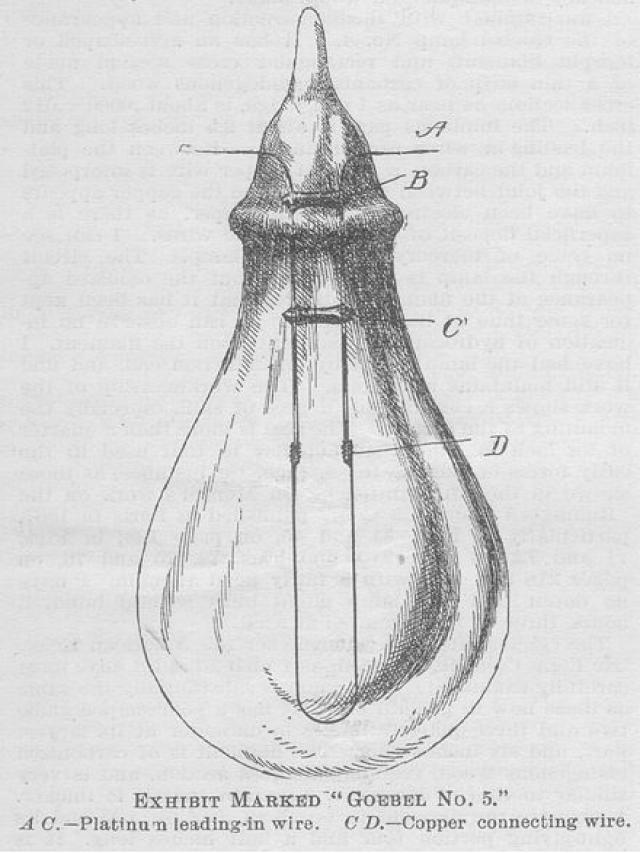
Heinrich Göbel (April 20, 1818 - December 4, 1893), also known as Henry Goebel, was a German mechanic and inventor. He participated in a dispute with Thomas Alva Edison about the invention of incandescent light lamps, although he failed to prove convincingly his claim to have invented it in 1854. He married Sophie Lübke in 1844 and at the age of 31, in 1849, both they emigrated to New York, where they lived until his death. In 1893, when Thomas Alva Edison ended other legal disputes over the invention of the incandescent bulb, preparing to obtain the benefits of his invention, Göbel filed a new legal dispute in the United States Patent Office claiming to have built an incandescent bulb in 1854 It would have worked for 400 hours. Before that, Göbel had made an offer to sell his invention to Thomas Alva Edison in 1882 for a few thousand dollars, but Thomas Alva Edison did not find enough merits in the invention, so he did not accept the offer. After a review of the case, Judge Colt gave his opinion on the matter: He is extremely unlikely that Heinrich Göbel built a practical incandescent lamp in 1854. This is evident in the history of the technique during the past fifty years, in the laws electrical that were discovered from that moment and applicable to the incandescent lamp, the imperfection of the existing means to obtain the vacuum, the high degree of skills necessary for the construction of all its parts, and the vast instruments with which Göbel worked. The law does not require conjecture, but certainty. It is easy when an important invention is made public that there are people who file a lawsuit that they had invented the same thing years before, and establish this by recalling witnesses to events that have long happened. That evidence must be received with great caution, and the presumption of novelty emanating from the granting of a patent cannot be denied unless there is clear and convincing evidence. However, an Edison competitor, Franklin Leonard Pope, had written an article describing Göbel as an unrecognized inventor, creating a myth that persists to date. A few months after a court established Edison's priority, Göbel died of pneumonia, being buried in the Green-Wood Cemetery in Brooklyn, New York.
TOP 4:
Aspirin
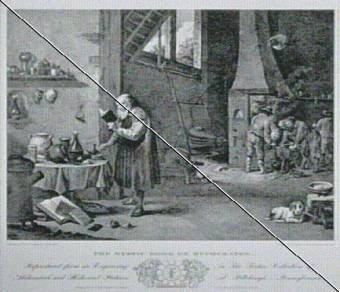
The white willow bark (Salix alba, with the same meaning, is the Latin name of the species) has been used since time immemorial for the relief of fever and pain, even by Hippocrates in the fifth century BC. C., the ancient Egyptians and the Amerindians, also counting on some possible example of its use and sacredness among the Hispanic-Roman peoples. The medicinal effects of white willow continued to be mentioned by ancient authors such as the polygraph and naturalist Pliny the Elder, the doctor and pharmacist Dioscorides or the famous physician Galen. In 1763 Edward Stone, reverend of the Church of England, presented a report to Lord Macclesfield, who presided over the Royal Society of English Science, concerning these therapeutic properties of the white willow bark highlighting its antipyretic effect. Stone described in his work that he had administered the extract in the form of tea or beer to 50 febrile patients, relieving the symptom. Further research led to the active substance of this plant, which the scientists called salicillin, a derivative of salicylic acid and acetylsalicylic acid. The active substance in willow bark was isolated in 1828 by Johann Buchner, Professor of Pharmacy at the University of Munich; it was a bitter and yellowish substance, in the form of crystalline needles that he called salicin. Two years earlier, the Italians Brugnatelli and Fontana isolated that same extract, but in a very impure way, and failed to prove that the substance was the cause of the pharmacological effects of the white willow bark. In 1829 a French pharmacist, Henri Leroux, improvised an extraction procedure from which he obtained 30 grams of salicillin from 1.5 kg of bark. In 1838 Raffaele Piria, an Italian chemist, working at La Sorbonne in Paris, managed to separate salicin into sugar and an aromatic component called salicylaldehyde. He converted this last compound, by hydrolysis and oxidation, into colorless crystals, which he called salicylic acid. Charles Frédéric Gerhardt, first to synthesize a purified form of salicylic acid. Acetylsalicylic acid was first synthesized by the French chemist Charles Frédéric Gerhardt in 1853 and then in salt form by Hermann Kolbe in 1859. It was necessary to wait until 1897 for the German pharmacist Felix Hoffmann, of the Bayer house, to synthesize to acetylsalicylic acid with great purity. Its therapeutic properties as an analgesic and anti-inflammatory were described in 1899 by the German pharmacologist Heinrich Dreser, which allowed its commercialization. Aspirin was the trade name coined by Bayer laboratories for this substance, becoming the first drug in the group of non-steroidal anti-inflammatory drugs, NSAIDs. Later, in 1971, the British pharmacologist John Robert Vane, then an employee of the Royal College of Surgeons of London, was able to demonstrate that the AAS suppresses the production of prostaglandins and thromboxanes, which opened the possibility of its use in low doses as a platelet antiaggregant, greatly expanding its commercial field and compensating for the fact that, at present, its use as an anti-inflammatory of choice has been displaced by other more effective and safe NSAIDs. After World War I, the Aspirin brand was expropriated in the winning countries, primarily England, the United States and France; in such a way that in these countries aspirin became the generic name of the substance. Since its commercialization, more than 350 billion tablets have been consumed and it is estimated that the daily consumption is about 100 million aspirins. Consequently, it is one of the most used drugs in the world, with an estimated consumption of 40,000 metric tons per year. In 2008, 85% of the world production of acetylsalicylic acid is carried out in Langreo, Spain, in a chemical plant of the multinational company Bayer. From there it is sent to different parts of the world where tablets are prepared and different pharmaceutical forms in which Aspirin is sold.
TOP 3:
Telephone-Antonio Meucci (1854)
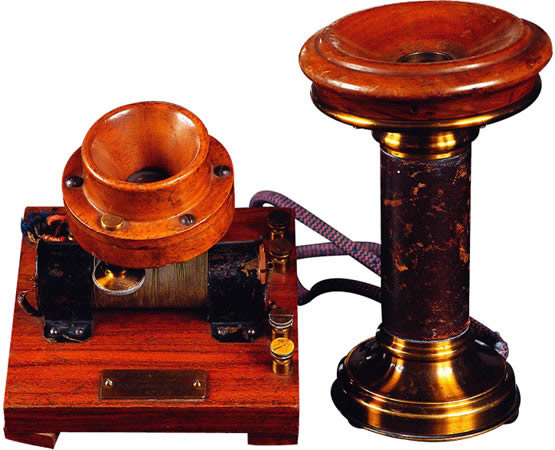
Around 1857 Antonio Meucci built a telephone to connect his office with his bedroom, located on the second floor, due to his wife's rheumatism. However, he lacked enough money to patent his invention, so he presented it to a company (Western Union, who promoted the "invention" of Graham Bell) that did not pay attention to it, but also did not return the materials. Apparently, and this is not proven, these materials fell into the hands of Alexander Graham Bell, who used them to develop his phone and presented it as his own. In 1876, after discovering that only a direct current could be used to transmit human voice, the American inventor of Scottish origin, Alexander Graham Bell built and patented a few hours before his compatriot Elisha Gray the first telephone capable of transmitting and receiving human voice With all its quality and timbre. Nor should Thomas Alva Edison, who introduced notable improvements in the system, among which is the microphone of carbon granules. On June 11, 2002, the United States Congress passed resolution 269, recognizing that the inventor of the telephone had been Antonio Meucci and not Alexander Graham Bell. In the resolution, unanimously approved, the US representatives believe that "the life and work of Antonio Meucci must be legally recognized, and that his work on the invention of the telephone must be admitted." According to the text of this resolution, Antonio Meucci installed a rudimentary telecommunications device between the basement of his home in Staten Island (New York) and his wife's room, on the first floor. Bell's patent was still debatable because there were rumors that Bell had a confidant in the patent office who warned him in advance that due to the particular case that happened, the two patents would be compared to discard the worst and most expensive of the two. Bell is said to have had access to compare Gray's patent with his own and after that he added a handwritten side note in which he proposed an alternative design to his own that was identical to Gray's. Alexander Graham Bell in 1876 then registered a patent that does not really describe the telephone but refers to it as such. (Later it emerged that there was an agreement whereby Bell would pay the WUTC 20% of the benefits derived from the commercialization of his invention for 17 years in a row).
TOP 2:
Coca-Cola-John Stith Pemberton (1886)
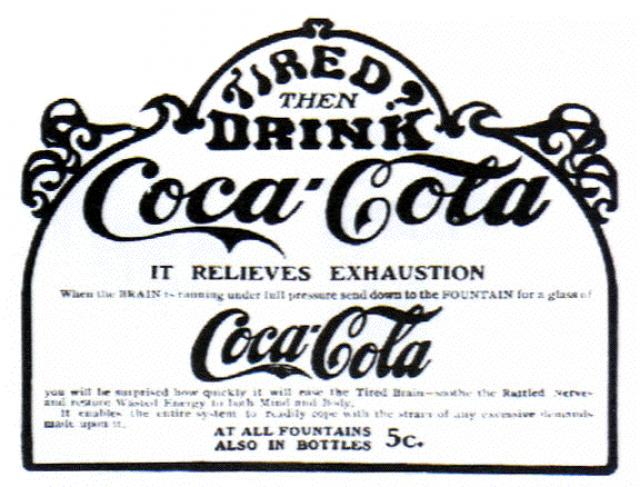
At first, I wanted to find the cure for headaches and stress, Pemberton experimented with cola and coca. The drink, which combined lime, cinnamon, coca leaves and Brazilian bush seeds, was called by some as "the medical elixir." It was his accountant, Frank Robbinson, who gave him the name and designed the logo and the stroke of the original letter. In addition, he sold a portion of The Coca-Cola Company to Asa Griggs Candler and when he died it was he who acquired the company for $ 23,300. The truth is that, like many great inventors, Pemberton did not know how to make much profit with his invention. On the other hand, with Candler the company increased sales by 4000% between 1890 and 1900. Advertising was an important success and at the beginning of the 20th century the drink was sold throughout the United States and Canada, as it also began selling syrup to companies independent bottlers. For many people considered a great inventor for inventing Coca-Cola.
TOP 1:
Locomotive-Richard Trevithick (1804)
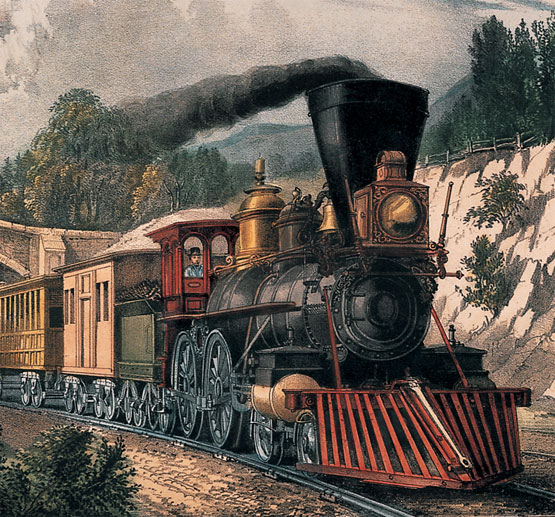
Trevithick built a high pressure machine in 1802 for a steel plant in Merthyr Tydfil, Wales. He held her to a rack and made her a locomotive. The patent was sold in 1803 to Samuel Homfray, the owner of the hardware store, who was so impressed that he made a bet with another industrialist that the locomotive could drag ten tons of iron down some tracks to Abercynon, at a distance of 15.7 km. The bet was carried out on February 21, 1804. The Trevithick locomotive towed five wagons with the ten tons and 70 men, and needed four hours and five to cover the entire distance, which is equivalent to a speed of 3.8 km / h It seems that the machine alone reached 25 km / h. The most striking thing about her was the large steering wheel that had been adopted from stationary machines, as well as the proven nozzle. Although it worked, this locomotive was unsuccessful because it was too heavy for cast iron rails, designed for horse-drawn wagons. After five months it stopped working and was used again as a stationary machine.
More lists

